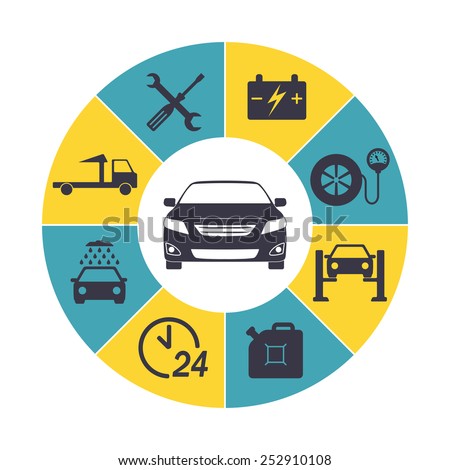Examining Your Automobile'S Caution Indicators: What They Really Communicate
Examining Your Automobile'S Caution Indicators: What They Really Communicate
Blog Article
Short Article By-Boye Winters
When you're behind the wheel, those beautiful warning lights on your dashboard can be a little bit difficult. Do you understand what they're attempting to inform you about your auto's health? Recognizing the importance of these lights is crucial for your safety and security and the long life of your lorry. So, the next time one of those lights appears, would not you wish to analyze its message accurately and take the essential steps to resolve it?
Common Warning Lights and Interpretations
Identify usual caution lights in your automobile and comprehend their significances to make sure secure driving.
One of the most common caution lights consist of the check engine light, which signals concerns with the engine or discharges system. If this light begins, it's vital to have your lorry examined without delay.
The oil pressure alerting light indicates reduced oil stress, requiring immediate focus to stop engine damages.
A flashing battery light could suggest a defective charging system, possibly leaving you stranded if not addressed.
The tire stress monitoring system (TPMS) light alerts you to low tire pressure, influencing vehicle stability and fuel effectiveness. Overlooking this might cause hazardous driving conditions.
The abdominal muscle light shows an issue with the anti-lock braking system, jeopardizing your capacity to stop quickly in emergencies.
Last but not least, the coolant temperature level advising light warns of engine getting too hot, which can lead to serious damage if not settled promptly.
Understanding these common warning lights will help you resolve issues promptly and keep safe driving conditions.
Value of Prompt Focus
Understanding the typical warning lights in your auto is only the very first step; the relevance of immediately dealing with these warnings can not be emphasized sufficient to ensure your safety on the road.
When a caution light illuminates on your dashboard, it's your automobile's method of connecting a prospective issue that needs attention. Overlooking these cautions can cause a lot more extreme problems later on, compromising your security and possibly costing you much more out of commission.
Prompt interest to cautioning lights can avoid breakdowns and crashes. For instance, a flashing check engine light can show a misfire that, if left unattended, can trigger damages to the catalytic converter. Resolving this promptly can conserve you from a costly repair.
Similarly, a brake system alerting light might indicate low brake fluid or worn brake pads, crucial elements for your safety when driving.
Do It Yourself Troubleshooting Tips
If you observe a warning light on your dashboard, there are a few do it yourself troubleshooting pointers you can try prior to seeking professional aid.
The initial step is to consult your auto's manual to understand what the particular caution light suggests. Sometimes the concern can be as straightforward as a loose gas cap activating the check engine light. Tightening the gas cap might resolve the trouble.
One more usual problem is a low battery, which can cause different advising lights. Examining https://www.startribune.com/business-surges-at-auto-repair-shops-as-minnesotans-try-to-make-vehicles-last-longer/600164074/ for rust and guaranteeing they're safe and secure might repair the trouble.
If a caution light lingers, you can attempt resetting it by detaching the auto's battery for a few mins and then reconnecting it. Furthermore, inspecting your vehicle's liquid degrees, such as oil, coolant, and brake liquid, can help fix warning lights related to these systems.
simply click the following webpage , comprehending your auto's caution lights is important for maintaining your automobile running smoothly and securely. By without delay addressing these alerts and recognizing what they imply, you can prevent costly repair work and potential break downs.
Bear in mind to consult your cars and truck's guidebook for particular information on each warning light and act as necessary to guarantee a trouble-free driving experience.
Keep educated, stay risk-free when driving!
